Yoga Mat
Manduka Pro vs Lululemon Yoga Mat
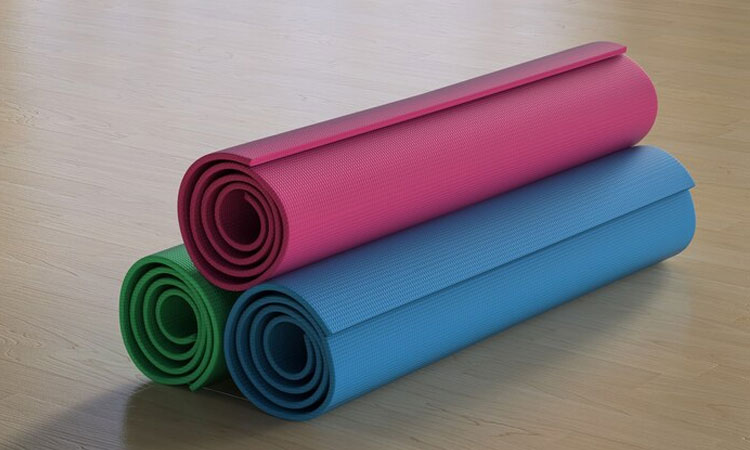
Manduka Pro vs Lululemon Yoga Mat: Yoga is the best way to reduce your stress level which is required for a healthy mind in a healthy body.
I think all the yogis including beginners already know about the companies Lululemon and Manduka. Both are giant companies that offer yoga mats and accessories. Both companies have won the loyalty and trust of yoga practitioners all over the world and this is the biggest reason behind their popularity among the people. Today, I will try to share the comparison between Manduka Pro vs Lululemon Yoga Mats.
So let’s get start
Manduka Pro vs Lululemon Reversible Mat
Material:
Manduka Pro mat is built using PVC material, which is widely used to make yoga mats. The PVC material (certified OEKO-TEX STANDARD 100 PVC) is Latex-free to keep people safe from latex allergy. This material is used to make toys for kids. Whereas, if I talk about Lululemon Reversible Mat, it is built using natural rubber. It has a polyurethane outer layer which means you can face scratches on it soon with time.
Durability
As we know Manduka Pro Mat is built with PVC, so PVC material is well known due to its durability that’s why Manduka offers a Lifetime Warranty on their mat whereas if I talk about Lululemon Reversible Mat, Lululemon does not offer any warranty and the reason of its manufacturing material. After the usage of a specific time, you can face scratches and stains on it.
Griping & Cushioning
PVC material offers an excellent griping level and the Manduka Pro mat is built with this material. But keep in mind, you can get this quality of gripping only when you let the mat on the salt for a night. Because a new PVC mat does not offer enough grip. Secondly, Manduka Pro mat is 6mm thick.
Lululemon Reversible Mat’s front side is coated so you can face little traction during asanas and it is 5mm thick. And we all know the more the thickness level, the more you get cushioning.
Comfortability
We feel comfortable on those mats which have anti-skid properties and the Manduka Pro Mat is more comfortable compared to the Lululemon Reversible Mat for some specific exercises like asanas.
Manduka Pro Mats PVC material is Closed-cell construction which means the mat is easy to clean and disinfect germs.
Weight, Dimensions & Thickness:
Manduka Pro Mat is 7.5 pounds in weight, 6mm thickness level as well as 71 inches by 26 inches in dimensions whereas Lululemon Reversible Mat is 5.24 pounds in weight, 5mm thickness level as well as 71 inches by 26 inches in dimensions.
It’s not easy to travel with both mats as they are a bit heavy due to their thickness level mentioned above. The Lululemon Reversible Mat is a bit lighter in weight instead of the Manduka Pro Mat.
In the same way, If I talk about the cost Manduka PRO Mat is a bit costly as compared to Lululemon Reversible Mat.
Conclusion
Both the company’s yoga mats are good but if I talk about specifically Manduka Pro vs Lululemon Reversible Mat then Manduka Pro is a good choice due to a number of reasons mentioned above like material, support, cushioning, gripping as well as the durability.
Share your views in our comments section regarding Manduka Pro vs Lululemon Yoga Mat.
Frequently Asked Questions
Is Manduka a good yoga mat?
Manduka mats are a good option, especially the PRO series due to their grip, cushioning, support and durability.
Are Manduka Pro mats slippery?
As we mentioned above a new Manduka Pro Mat can feel a bit slippery but after the salt scrub or a few times usage, it will become non-slippery.
Is the Lululemon mat good for Pilates?
A Mat that offers a good level of grip, cushioning and support can be used for Pilates so the Lululemon mat can be used.
Do Manduka yoga mats smell?
Manduka yoga mats have an odor especially the PRO mats due to their manufacturing material. But no problem it will eradicate with time or usage. Apart from that airing out for a few hours to days can also dissipate its odor.
How long does a Manduka mat last?
The Manduka is offering a lifetime warranty for its PRO mats. It means the mats are durable and can last over at least a decade with proper care.
Yoga
Best Travel Yoga Mat UK
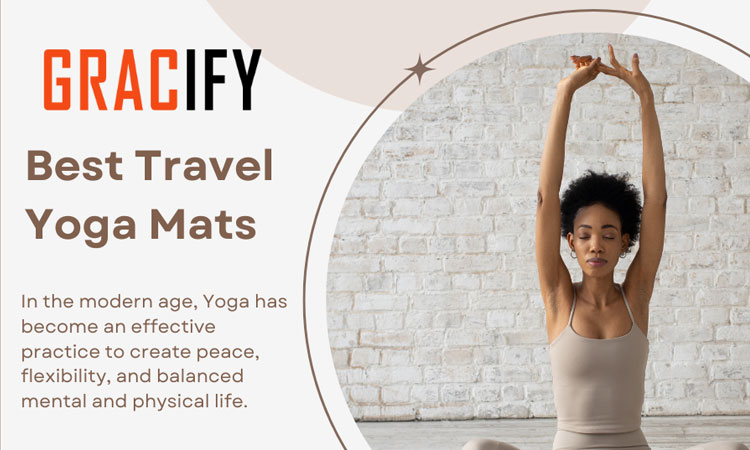
Best Travel Yoga Mat UK: In the modern age, Yoga has become an effective practice to create peace, flexibility, and balanced mental and physical life. It provides a sense of relief from the tensions of our hectic routine life. Yoga mats make our practice easier. We found these mats helpful in the tough and stretchy movements due to their specific structure.
If you travel frequently and do not want to create a gap in your practice then it is necessary to have a reliable travel yoga mat. In this guide, we will deeply explore the best travel yoga mats and also provide sufficient information about the leading brands available in the UK.
Things to Consider Best Travel Yoga Mat UK
When you are moving towards choosing the best travel yoga mat uk, there are some important factors that you must keep in mind because all yoga mats are not of the same quality. Specially travel yoga mats have some important and different traits than the other ones.
1. Weight and Portability
When you are going to select your best travel yoga mat, the first and foremost thing is its weight. A travel mat must be lightweight so it becomes easy to carry it anywhere. If you have a lightweight and high quality travel mat then it is convenient to roll up and it will not take so much space in your luggage. Ideal travel yoga mats typically weigh between 1.5 to 2.5 pounds which are basically in demand.
Now modern yoga mat companies designed them with a carrying strap or bag just to make them more reliable for you. This feature is not only useful in their easy transport but also remarkable in its protection. Its smart size prevents to create a mess in your suitcase.
2. Thickness and Cushioning
In the common observation, the thicker yoga mats offer more comfort and support as compare to the thinner ones. They are typically suitable for those who need extra padding for their joints on hard surfaces. On the other hand, the travel yoga mats are often thinner than the standard ones because of their different demands and needs.
As we already discussed the travel yoga mat must be thin and lightweight to resolve the problem of carrying it. The best travel yoga mats tend to range from 1.5mm to 5mm thick which makes them easy to transport without any discomfort.
3. Grip and Stability
Another important and considering factor about the best yoga mat is its grip. It must be provided with a stable and non slippery surface that can improve your performance even if you are drenched in sweat. This feature will be very effective in building up your confidence while you are practicing more dynamic or sweaty styles of yoga like Vinyasa or Ashtanga. It prevents us from the risk of injuries.
Most of the yoga mats are prepared from high-quality, non-toxic materials such as thermoplastic elastomer (TPE), natural rubber, or PVC that offer superior grip. These types of surfaces reduce the tension to slip and provide good and reliable support and grip to your feet and hands. You will feel secure during your practice, no matter the environment.
Often the best travel yoga mats feature textured surfaces to enhance grip, then it does not matter whether you are practicing on slick hotel floors or outdoor surfaces.
4. High quality material and Eco-friendliness
Another considerable factor about the travel yoga mat is that it must be made of high quality material and durable which must withstand for a long time. A traveling mat does not only face the frequent rolling and folding but also bears different environmental changes. When you have to carry on your yoga practice anywhere then you will prefer such types of mats that can be able to withstand the exposure to various climatic ups and downs.
As we are all well aware of the increasing environmental risk, in this condition we ought to choose mats made of eco friendly materials. We should avoid the traditional mats made from eco conscious materials like natural rubber, jute, or TPE. Many yoga mat companies offer mats prepared with biodegradable materials free from harmful chemicals. These mats are much better than PVC mats.
5. Easy to Clean
A travel yoga mat must have the quality to clean it easily and fastly. When you tend to practice yoga at various locations then its cleanliness might become challenging for you. To keep your concern in mind we just prefer to select the best travel yoga mats that can easily be washable in a machine or wipeable with a damp cloth. Such kind of mats can comfortably deals with dirt, dust, and sweat and will be helpful to save your time and effort.
Top Brands for Best Travel Yoga Mat UK
We have many yoga essentials brands that offer the best mats in the UK, but there are selective ones that do not compromise on quality. Here we will provide you with the details of the top brands:
1. Liforme
Liforme is a very popular and well reputed yoga mats brand which attract people due to the superb quality of its mats. It offers environmentally friendly and biodegradable mats that is the prime importance and demand of this age. These mats are absolutely free from toxic materials. This brand also perfectly meets the needs of travelers and provides them with their desirable yoga traveling mats.
2. Gaiam
Now we are going to move to another brand that is Gaiam. It has gained the priority and favor of the masses due to its budget friendly trait. It provides the best travel yoga mats that are well known for their lightweight and durability. These mats are made with PVC having features like easy to carry and clean. At just 1.5mm thick, it offers the perfect balance between portability and comfort.
3. Manduka
Manduka is also a worth considering brand in UK that is actually popular due to its durability and cushioning. It offers mats that are made with natural rubber which provide excellent support while you are performing difficult and stretchy movements. These mats have a non slippery surface that is perfectly suitable for your good performance even if you are so sweaty. These mats are the best choice for those who need extra cushioning on rough and tough surfaces. They are easy to transport and roll up even if you travel frequently.
4. Jade Yoga
Jade Yoga mats are also become the interest and demand of many yoga lovers. They are made of non-toxic, sustainable, and natural rubber which provides extra and remarkable grip. They are so comfortable and lightweight. If you are looking for a washable and eco-friendly mat then Jade Yoga mats will be a good choice.
5. Lululemon
Lululemon does not need any introduction regards yoga products. It offers premium quality yoga essentials which is the major reason for its popularity. Its travel yoga mats are of top quality that not only provide grip and cushioning but are also lightweight, compact, and highly durable. They are so versatile that they are equally suitable and useful for both beginners and advanced practitioners.
Conclusion
At the sum up of these precious suggestions for the Best Travel Yoga Mat UK, we just want to say that the right understanding of the travel yoga mats is the key to the perfect choice. When you have found all the explained factors in your mat, then you must not waste your time thinking about its selection. It does not matter whether you are a frequent traveler or simply visit somewhere, choosing the right and perfect yoga mat is crucial to carrying on your practice.
All the above mentioned brands tried their best to meet your needs. Top ranked brands like Liforme, Gaiam, Manduka, Jade Yoga, and Lululemon provide high-quality Best Travel Yoga Mat UK that offers the perfect balance of comfort, ease, durability, weight, and portability and facilitates cleanliness.
Yoga Mat
How to Store a Yoga Mat?
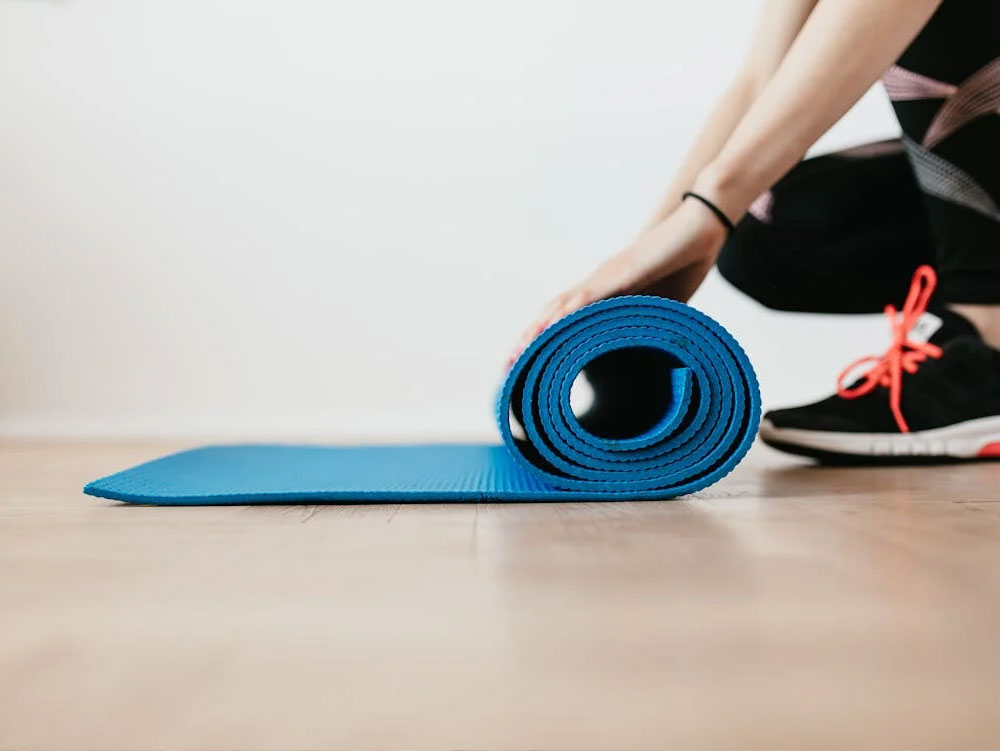
Yoga mats are the most crucial part of maintaining the yoga practice whether you are at home or leaving home for the studio. A question or scenario we always face is How to Store a Yoga Mat in such a way, that we will remain to assure that the yoga mat will remain clean and durable. With a little dedication, we can store a yoga mat correctly for longevity in an organized way.
Why is Yoga Mat Storage Important?
I think we should first discuss the question Why is Yoga Mat Storage Important before moving towards the different ways or methods to store a yoga mat:
Longevity:
If you do not pay attention to the storage of Yoga mats soon the mats will damage or fill with dirt. Through a yoga mat’s proper storage, we can easily increase its longevity and stay safe from its curling edges or tears. This thing will also help us to maintain its original shape.
Hygiene:
If we leave our yoga mat openly after the practice, it will absorb a lot of dust particles, sweat, and dirt. In this scenario, if we don’t pay attention to cleaning or washing our yoga mat we will lose it soon due to different allergies. You can face unpleasant odors that make the mat unhygienic to use.
Space Optimization:
Yoga mats are not a big item, but when left lying around, they can take up your space. It is very crucial to organize space for your yoga mat especially if you have a small space.
Convenient Access
If you store a yoga mat in a convenient, accessible location it makes it easier to do yoga into your daily routine. Quick access to your yoga mat can be helpful for you to be consistent with practice.
How to Store a Yoga Mat: Practical Solutions
There are many practical options depending on the space available and your choices for how to store yoga mats at home. Here are some simple yet effective ways to store yoga mats at home:
1. Rolling Up Your Yoga Mat
After each use, the easiest way to store a yoga mat is to roll it up. After rolling the mat, just use the straps to bind the yoga mat.
2. Using a Yoga Mat Bag
These bags are specifically designed just to store your mat and are easier to transport with comfort. Most of them have adjustable straps to carry the mat as well as pockets for saving the accessories. You just have to roll up your mat and put it inside the bag space to protect it from dust and easy to carry.
3. Hooks and Wall Storage
Hang your yoga mat with style using wall-mounted hooks. This space-saving solution keeps mats off the floor, frees up space and creates an artistic display. Ideal for multiple mats or fitness gear.
4. Under the Bed
If you want to store your yoga mat or gear out of sight, you can store it under the bed area. You just roll up the mat or bind it with straps and put it under the bed for storage, just make sure it will remain safe from dust and moisture.
5. Yoga Mat Stand or Rack
There are different design stands or racks available that are specifically made for yoga mats. You can save multiple yoga mats as these racks allow you to store multiple mats vertically.
DIY Yoga Mat Storage Ideas
Let’s discuss some of the DIY yoga mat storage ideas that can try at home for yoga mat storage:
1. DIY Yoga Mat Shelf
Making a small wooden shelf for your yoga mat is a simple yet functional project. You can create a wall-mounted shelf with dividers to hold multiple yoga mats, towels, or props. Customize the shelf to fit your room’s decor by painting. This option keeps your mats off the ground, protects them from disfiguring, and enhances the overall look of your room.
Materials needed:
Wooden planks (cut to size)
Brackets for wall mounting
Screws, nails, and a hammer
Paint or stain for finishing
2. Repurposed Wine Rack
Wine racks are not only for wine bottles—they can also be repurposed into stylish yoga mat storage. A horizontal rack with slots can hold multiple rolled-up mats, providing: Low-cost storage and stylish organization.
Materials needed:
Old or unused wine rack
Optional: Spray paint or wood stain to match your decor
3. Bungee Cord Wall Holder
Create a minimum yoga mat storage solution using bungee cords. You need to place just two hooks on the wall and now you can use a bungee cord or something similar to hold your yoga mat. It will also give your wall a modern and creative look.
Materials needed:
Two wall hooks
Bungee cord or strong elastic band
Drill and screws for installation
4. DIY Macrame Yoga Mat Hanger
It’s for those who enjoy crafting, creating a macrame yoga mat hanger adds a bohemian flair to your yoga space. This attractive hanger can be hung from a hook on the wall or ceiling, adding a natural and artistic touch to your room while keeping your mat nicely stored.
Materials needed:
Macrame cord
Ring or wooden dowel
Scissors
Macrame pattern or tutorial (optional)
5. PVC Pipe Yoga Mat Organizer
PVC pipes are of different varieties and are affordable, making them a great option for a DIY yoga mat organizer. You can cut PVC pipes into sections and arrange them vertically to hold multiple mats. Secure the pipes together using glue or zip ties, then paint or cover them with fabric to match your room’s style.
Materials needed:
PVC pipes
PVC pipe cutter
Glue, zip ties, or clamps to secure pipes together
Paint or fabric for decoration
Bonus Tips for Yoga Mat Care and Storage
Here are a few extra tips to ensure that your yoga mat remains in great condition:
1. Clean Your Mat Regularly
Before storing your yoga mat, make sure to clean it regularly. Use a dedicated yoga mat cleaner. Ensure that the mat is completely dry.
2. Avoid Direct Sunlight
Long-time exposure to sunlight can damage anything whether it’s a mat or anything else.
3. Use a Mat Strap
Bind your mat tightly with a yoga mat strap when stored. This prevents the mat from unrolling or curling up.
Conclusion
As per our conversation during the article, storing a yoga mat is very crucial for its longevity, hygiene, and easy accessibility. Several options are available through which we can store our yoga mats even in small spaces by organizing the space. A few of the methods or ways, we have already discussed in our article “how to store a yoga mat”. Just read the ideas and apply those you like to your yoga mat. Share your thoughts in our comments section concerning how to store yoga mats at home.
Yoga Mat
Are Yoga Mats Toxic?
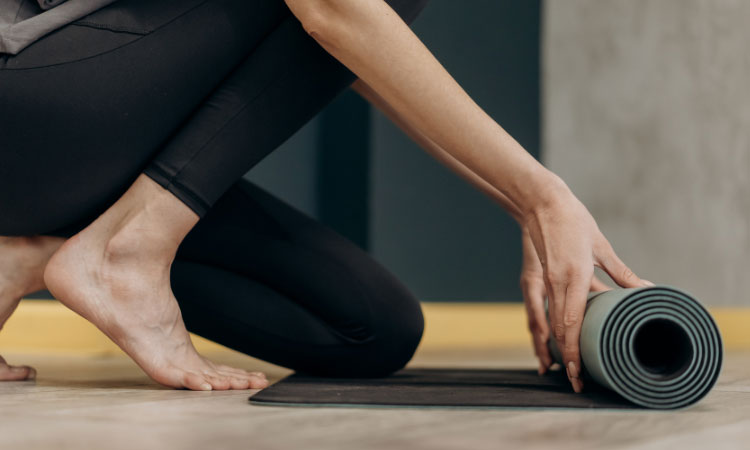
Are Yoga Mats Toxic: We are all well aware of the importance of yoga mats for performing yoga practice daily as it has several benefits, especially gripping, cushioning, and comfort. However, there is a growing concern regarding the equipment that is used to support Yoga.
Understanding the Concern: Are Yoga Mats Toxic?
Most of the yoga mats are still being made with PVC material which raised questions regarding its toxicity. So, let’s take a look in detail at PVC Material.
What is PVC?
PVC stands for Polyvinyl Chloride. Basically, it is a cost-effective type of plastic polymer with the ability to release toxic chemicals or substances for example dioxins, phthalates, etc.
Phthalate chemicals are used during the formation of plastic in regards to enhance the flexible properties of plastic. These chemicals play a very toxic role in the disturbance of human body parts such as hormones and the respiratory system.
Secondly, dioxin compounds can be released during the manufacturing of PVC which play a role as a continuous environmental polluting agent. So these harmful substances leave multiple adverse effects on the human body just due to their continuous presence in the environment that causes the destruction of the environment as well as human health.
On the other hand, synthetic rubber is also found in Yoga Mats that may consist of some health’s unsafe components like VOCs that may diffuse gas into the air while used for Yoga. These are such health-sensitive things that lead cause of trouble for the public who have a plan to take long-term Yoga exercise.
Here we’re going to let you know about one of the leading brands with having Non toxic Yoga Mats.
Are Gaiam Yoga Mats Non Toxic?
Gaiam is one of the leading brands with almost all essential supplies regarding yoga and wellness including Yoga Mats. The most repeated question that is asked by the consumers is about its material’s toxicity and non toxicity.
Materials Used in Gaiam Yoga Mats
A wide variety of Yoga Mats is found in Gaiam for Yoga consumers which are made up of non toxic and eco-friendly materials, a few of them which are widely used in the preparation of Yoga Mats are as follows:
• PVC:
Though this material is cheap and budget-friendly for Gaiam the fact is that it’s considered toxic and not eco-friendly as mentioned before. As a result, the only controversial material is left just because of its preparation procedure. This makes PVC a non toxic and eco-friendly material and reduces the risk factor to its consumers.
• TPE
(Thermoplastic Elastomer): As It is a type of chemical-free recyclable plastic it’s considered safe and harmless environmentally as well as for human health. It’s also free from PVC and Latex. That’s why it’s considered eco-friendlier than PVC.
• Natural Rubber:
A naturally occurring substance that consists of a sustainable and biodegradable material. It is used in the preparation of premium Yoga Mats, also offered by Gaiam. So these kinds of Yoga Mats are totally toxins free and are a good option for Yoga Mat’s consumers.
The company markets itself as a sustainability maintainer and environmental-friendly lover. So the answer to the question “Are Gaiam yoga mats Non Toxic” is yes.
Are Lululemon Yoga Mats Toxic?
The debates are ongoing concerning “Are Lululemon Yoga Mats Toxic”. Lululemon is also a brand famous among people due to their yoga-related products’ quality including clothes. Lululemon yoga mats have several qualities or features like
- Durability
- Non toxicity
- Eco-friendliness
- Comfort
- Grip & Cushioning
Lululemon Yoga Mats Material
Lululemon uses two different materials, especially for their signature yoga mats, one of them is natural rubber and the second is polyurethane.
Natural Rubber:
As we have already discussed earlier in this article regarding the natural rubber material. So, in simple words, the natural rubber material is sustainable, non toxic, best for gripping and cushioning along with biodegradability.
Polyurethane:
Lululemon uses Polyurethane for the top layers of their yoga mats as this material is synthetic and increases the grip and durability of the mat. Generally, this material is considered safer than PVC, and Lululemon also claims that their yoga mats don’t have harmful chemicals.
Seller Picks Best Non toxic Yoga Mats:
We have compiled a list of a few best non toxic yoga mats built with eco-friendly materials that are the user’s choice.
Manduka PRO Yoga Mat
The yoga mat is built with PVC now the question is how this mat is Non toxic. It is a high-quality PVC material certified OEKO-TEX which means it is a certified non toxic yoga mat but not much eco-friendly. If I talk about its grip and cushioning, it is a recommended choice for yogis.
Read the comparison before decision on Manduka Pro vs Lululemon Yoga Mat.
Features:
- Non Toxic
- Eco-Friendly
- Certification of Non Harmful substances
- Excellent grip and cushioning.
Jade Yoga Harmony Mat
The yoga mat is built with 100% natural rubber which is a Non toxic material. We have already explained natural rubber material earlier in the article. We are going to list down its features only.
Features
- Synthetic
- Biodegradable
- Eco-friendly
- Durable & Sustainable
- Perfect for Bikram or Hot Yoga / sweaty sessions.
Liforme Yoga Mat
Liforme Yoga Mat is built with Non toxic materials such as natural rubber and eco-polyurethane.
Features
- Eco-Friendly
- Sustainable
- Non Toxic
- Biodegradable
- Excellent Grip and Cushioning
- Ideal choice for regular or serious yogis
Conclusion
Health is the most important factor that can’t be ignored. So, always pay attention to your healthy environment while choosing a yoga mat. Make sure the material is non toxic which has been used to build the yoga mat. In this way, you will remain healthy and get the real advantages of yoga means mindfulness. We have discussed the major materials that are used to build the mat.
Hopefully, I have explained the question are yoga mats toxic? Apart from that, I have also tried to share some of the best non toxic yoga mats and their brand options available in the market that usually we use in our studio.
-

 Yoga1 year ago
Yoga1 year agoNatural Rubber vs Cork Yoga Mat – which is Better?
-
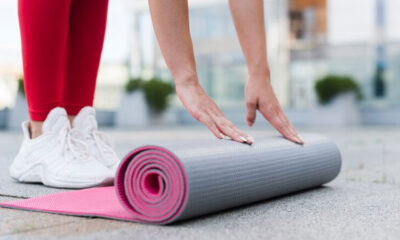
 Yoga1 year ago
Yoga1 year agoTPE vs EVA Yoga Mat & NBR vs PVC Yoga Mat
-

 Yoga1 year ago
Yoga1 year agoHow to Roll Up a Yoga Mat? For Long Lasting
-
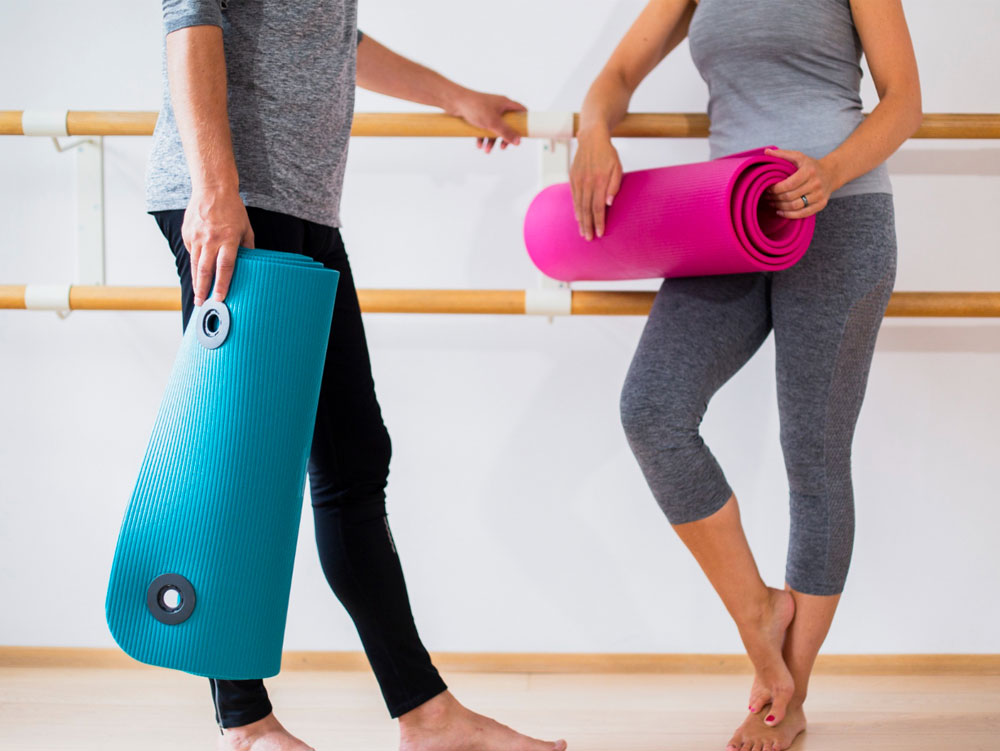
 Yoga1 year ago
Yoga1 year agoPilates Mat vs Yoga Mat
-

 Yoga1 year ago
Yoga1 year agoHow to Clean / Wash Yoga Mat
-
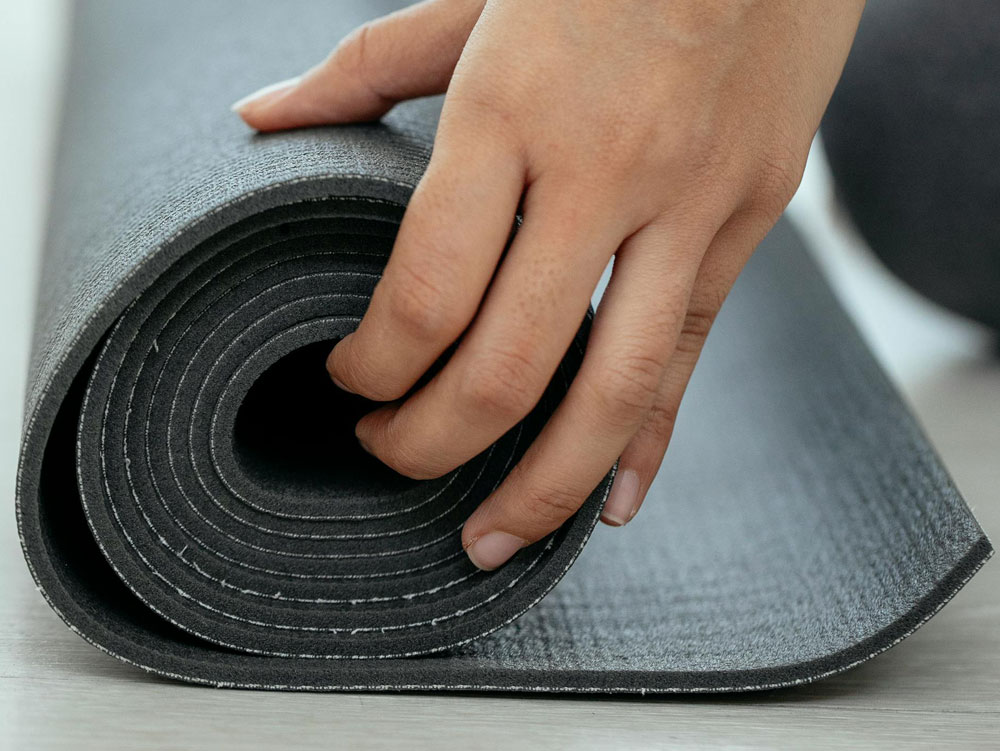
 Yoga1 year ago
Yoga1 year agoWhich Material is Best for Yoga Mat
-
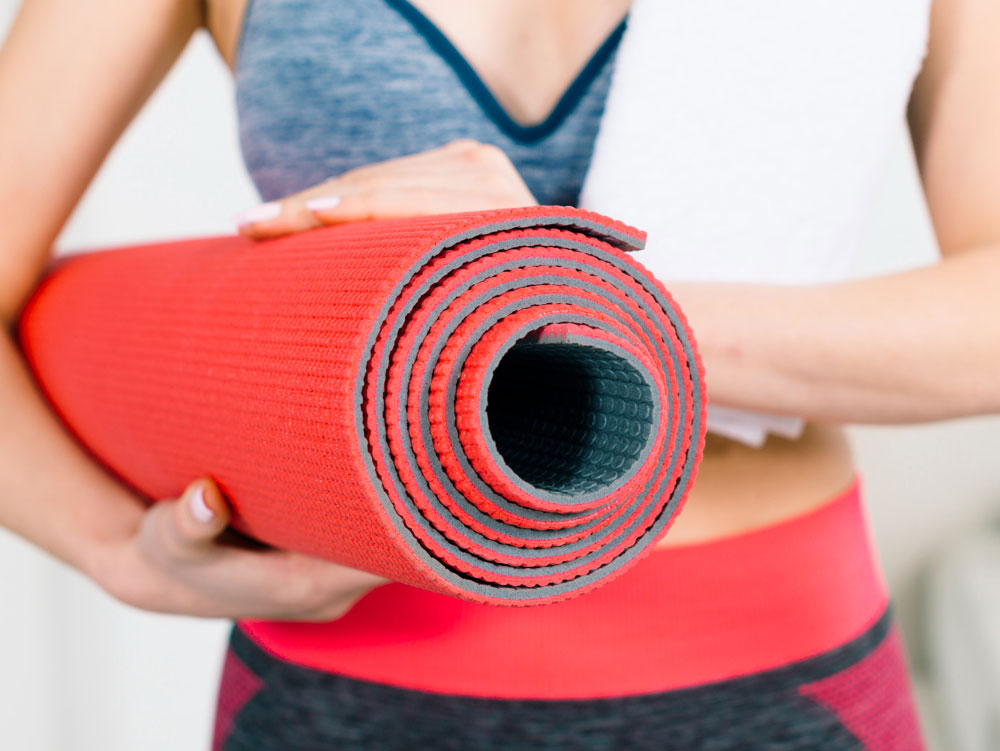
 Yoga1 year ago
Yoga1 year agoWhich is the Best Yoga Mat Thickness?
-

 Yoga1 year ago
Yoga1 year agoWhich is the Best Yoga Mat Size?











